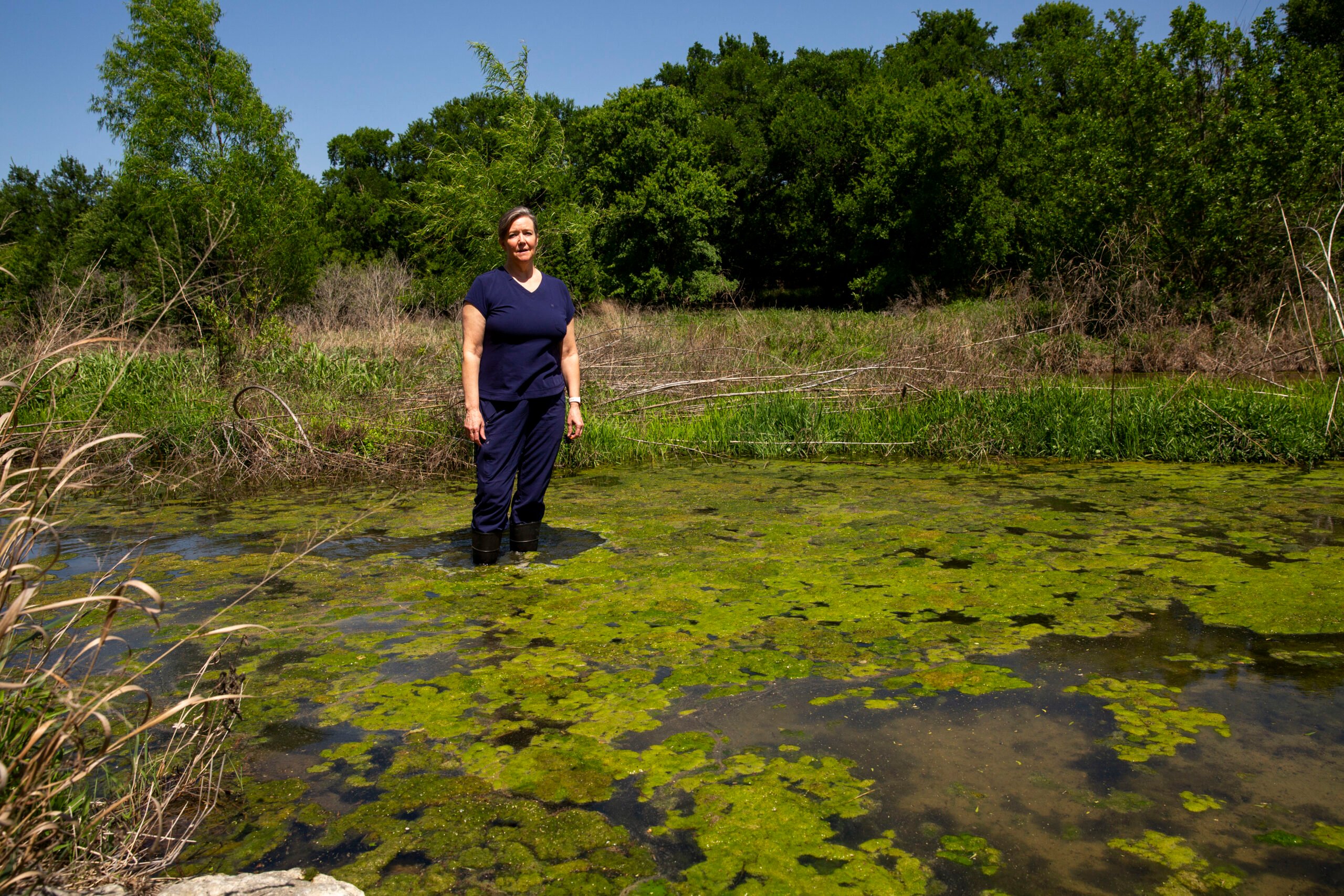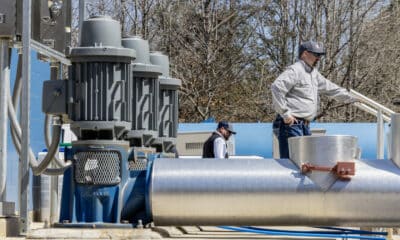News from the South - Texas News Feed
Addressing Texas’ youth mental health beyond social media
Social media isn’t the only cause of mental health woes among Texas youth, advocates say
“Social media isn’t the only cause of mental health woes among Texas youth, advocates say” was first published by The Texas Tribune, a nonprofit, nonpartisan media organization that informs Texans — and engages with them — about public policy, politics, government and statewide issues.
Sign up for The Brief, The Texas Tribune’s daily newsletter that keeps readers up to speed on the most essential Texas news.
Over the last four months, a joint committee of state House and Senate members has met twice to listen to hours of testimony on the effects the online world is having on minors, with lawmakers classifying social media as “the most dangerous thing our kids have legal access to in Texas.”
Lt. Gov. Dan Patrick has made examining social media for youth a legislative priority for the Senate, and so far, six bills have been filed this state legislative session to address the issue, including one that would prohibit minors from creating accounts on social media sites and require age verification for new users.
No bills have been filed yet to meaningfully address workforce shortages beyond sharing workers with other states and loan repayment programs that have been in place for years, and the state is unlikely to fully replace the more than $19 billion Texas schools have received over the last four years in COVID-19 funds, with a large percentage of it going to address youth mental health needs.
Even though it has received heavy attention from lawmakers, social media is just one reason for the surge in youth mental health problems, according to mental health providers, advocates and school officials, and addressing social media shouldn’t come at the expense of building up the state’s mental health providers and funding life-changing programs on the brink of extinction.
“The surge in youth mental health challenges stems from multiple interconnected factors. Today’s youth face intense academic and social pressures, often without adequate (mental health) support systems,” said Lyssette Galvan, public policy director for the National Alliance on Mental Illness in Texas. “The 89th legislative session presents a vital opportunity to address these challenges comprehensively.”
Roughly one in five of Texas’ 7 million youth report having a mental, emotional, behavioral or developmental problem.
And the mental health of young Texans has only gotten worse. Over the last five years, the rate of Texas youth who reported at least one major depressive episode has increased from 12% to 19% — or 483,000, according to Mental Health America.
Programming needs
When the COVID-19 pandemic swept across the world, she witnessed a different level of investment in youth mental health, said Andrea Guerrero, director of public health for Bexar County.
“It allowed us to expand our reach and approach to community-based mental health, especially youth mental health,” she said.
About $100 million of $350 million in COVID-19 relief funds that Bexar County received were used to hire clinicians and start programs, including a Boys and Girls Clubs mental health initiative and multiple school programs catered for each district.
This is why Guerrero considers the rise in mental health referrals in Texas and across the nation as an awakening, not a crisis being brought on by one specific thing, such as social media. The rising number of cases shows that the stigma around mental health is dropping, she said.
However, meeting the mental health needs of so many young Texans will become even more challenging as COVID-19 funds expire in the coming year or two, putting programs across the state in danger, she warns.
The pandemic emergency funding helped create and sustain many innovative mental health efforts in Texas, including telepsychiatry programs in rural schools, peer-to-peer services done by fellow students, and library programs for teenage mental health.
Pandemic relief funding is also supporting 11 of the 48 teams that provide specialty outpatient treatment for people who experience psychosis for the first time, often children. These teams are made up of a psychiatrist, case manager and education specialist, among other providers, who treat patients for up to three years.
The service helps families who might not have financial resources. Without additional funding, several of these teams are at risk of going away, Galvan said.
House Bill 1594 by Rep. Mihaela Plesa, D-Dallas, which would require commercial insurance policies to cover these crisis team services, would plug just one of many holes in the mental health system that the expiration of COVID-19 relief funds leaves behind.
Guerrero said the county does not have funding to immediately replace the $100 million in pandemic relief funding that went toward mental health. The county has already contacted school districts it has supported for their plans on staying afloat.
“For example, if you hired five clinicians, can you keep one of them? How much can they budget for themselves? We are also working on creating an ecosystem of additional partners to try and provide a warm handoff,” she said.
Galvan said schools currently receive a $400 million safety allotment from the state, and because schools must spend so much on security, only a mere 1.6% of these funds are being directed toward mental health support.
A 2023 statewide survey found that 714 school districts that participated reported using the Elementary and Secondary School Emergency Relief Fund for mental health, primarily to provide services for students to transition back into the classroom after the pandemic. These $19 billion in funds must have been committed by the end of 2024 and be spent by March 2026.
Sen. José Menéndez has offered a way to help keep funding these services with Senate Bill 176. It would allow schools to partner with local mental health authorities to provide on-campus services for eligible low-income students that are funded with Medicaid reimbursements.
House Bill 462 by Rep. Ryan Guillen, R-Rio Grande City, and House Bill 1728, also by Plesa, would also create a mental health allotment for schools. Guillen’s bill would give $100,000 a year and Plesa’s would provide funding based on student attendance.
Provider shortage
Round Rock school district superintendent Hafedh Azaiez said he welcomes any help from lawmakers to address social media because his top priority right now for youth mental health is funding.
“The last session, they wanted a police officer on every campus and all these security measures, but it was an unfunded mandate,” Azaiez said. “Some school districts, including ours, were able to fulfill it and provide some mental health resources, but a lot of school districts aren’t as big, and they have to make tough choices between security and mental health.”
Azaiez said his school district, one of the largest in the state, takes pride in providing mental health resources to their students, but he needs more funding for providers.
“We have over 47,000 students, and we have 12 or 11 social workers at a time,” Azaiez said. “With that ratio, can you confidently say that you meet every kid’s needs?”
Social workers on their campus are spending most of their time responding to crises, even though they would prefer to be more proactive, using skills like case management, basic needs, and mental wellness.
“Right now, we have two individuals to cover 11 campuses,” said Byron Gerard, Round Rock’s assistant superintendent of student support services. “That is a heavy lift.”
Today, 246 of Texas’ 254 counties are wholly or partly designated by the federal government as “mental health professional shortage areas.” This has had a profound effect in rural, border, and frontier counties in Texas, where there may only be one mental health professional or none.
“If we hired 10 clinical providers right now for mental health services, we would probably keep all 10 of them busy,” Guerrero, the director of public health for Bexar County, said. “It’s really about building up that workforce specifically for youth because it takes an additional thousands of hours to be clinically certified to provide mental health services to kids.”
Texas has 4,017 licensed school psychology specialists, a 27.6% increase from the 3,148 providers in 2015. However, in 2023, there were 97 counties without licensed school psychology specialists.
The state’s crisis response infrastructure also requires significant improvements, Galvan said, as the state only has eight youth crisis outreach teams and six youth crisis respite units among 39 local mental health authorities.
“Proper staffing, funding, and youth-specific resources are essential for an effective crisis continuum of care, including 988 call centers,” she said.
Social media’s advantages
Although research on the effects of it is still new, social media has been shown to put young people at a greater risk of depression, anxiety, and other mental health challenges.
“While technology is an integral part of modern life, its use must be balanced to ensure children develop the critical and social life skills necessary to thrive,” said Bryan Mares, government relations director for the Texas chapter of the National Association of Social Workers.
Lawmakers have suggested several initiatives in the next session to address the online dangers affecting Texas children, including training teachers about cyberbullying, banning the use of people’s likenesses in artificially created pornographic images, and even adding warning labels on social media platforms that state what social media can do to a minor’s mental health.
“We have heard youth talk about how social media creates intense levels of comparison for them and their peers. For girls specifically, social comparison is the number one predictor of poor body image,” said Ana O’Quin, advocacy manager for the Girls Empowerment Network.
A sign of the state’s increased effort to lessen social media’s negative impacts, the Texas Health and Human Services Commission recently awarded Bexar County’s mental health authority a $1.2 million grant to create a program to educate teens and parents on the pros and cons of social media and video games.
Jelynne LeBlanc Jamison, head of the mental health authority, said the goal of the program is not to villainize social media, but to have parents understand the critical role these platforms play in their children’s lives and for children to understand the dangers of this digital landscape. She said most of the problems with social media come from a lack of understanding between generations.
“I think we have been really lazy in terms of really guiding people on how to use these tools,” said Jamison, who is using the new social media funding to expand their outreach specialists from one to nine. “And I think we’ve made some mistakes and I hope we don’t go much further without making some common sense rules about usage and access.”
Jennifer Edwards, executive director of the Texas Social Media Research Institute at Tarleton State University, said there are clear benefits of social media, especially for those who live in rural areas, as they get the opportunity to become positively exposed to different viewpoints and issues and to find their own community that might not exist in their small town.
Youth can use social media to learn, create content and express themselves because they have information at their fingertips, according to researchers.
“Having that sense of community is especially beneficial for wellness and mental health,” she said.
Putting all the blame on social media for the adverse mental health outcomes of young Texans ignores the pandemic’s varying effects on children’s developmental years, according to mental health advocates.
After schools reopened after pandemic-related closures, a majority of students returned with what appeared to be generalized anxiety, Guerrero said.
In 2021, the American Academy of Pediatrics, American Academy of Child and Adolescent Psychiatry, and Children’s Hospital Association declared a national emergency in child and adolescent mental health due to the pandemic.
These organizations predicted mental health disorder rates are likely to increase over time, given that sustained COVID-19 stressors may result in years-long mental health impacts.
“There isn’t a magic wand or one policy solution to youth mental health. But instead, we need to tackle this issue from multiple angles,” Mares said.
This article originally appeared in The Texas Tribune at https://www.texastribune.org/2025/01/27/texas-youth-mental-health-needs-social-media/.
The Texas Tribune is a member-supported, nonpartisan newsroom informing and engaging Texans on state politics and policy. Learn more at texastribune.org.
News from the South - Texas News Feed
Dish Soap: The Versatile Cleaning Hero You Didn’t Know You Needed
SUMMARY: Dish soap is a versatile cleaning tool that goes beyond washing dishes. It can remove hair dye from skin, clean makeup brushes, reduce condensation on windows, stop squeaky doors, and even clear clogged drains. Dish soap works as a gentle insecticide for plants and is effective for cleaning various surfaces. Consumer Reports highlighted top picks, with Dawn Ultra praised for its suds and Gain Ultra Clean for affordability. However, dish soap shouldn’t be used in dishwashers or washing machines as it creates excess suds that can damage appliances. Additionally, excessive use on skin or hair can strip natural oils.

Discover the incredible versatility of dish soap, a kitchen staple that does more than just cut through grease. Consumer Reports unveils how this soapy superhero can tackle a variety of messes around your home, making it the secret weapon hiding in plain sight.
News from the South - Texas News Feed
Mostly cloudy, slight chance of storms west of SA tonight
SUMMARY:
Title: Mostly cloudy, slight chance of storms west of SA tonight.
Summary: Good Monday morning! I’m meteorologist Justin Horn sharing the forecast. Today will be mostly cloudy with temperatures near 90. Although there’s a slight chance of showers tonight due to potential storms from Mexico, it’s unlikely to impact the river parade. Tomorrow should remain quiet, but expect increased rain chances midweek, particularly Wednesday evening with possible strong thunderstorms. A 40% chance of rain is forecast for Wednesday, along with similar chances on Thursday and Friday. Stay weather-aware, especially with ongoing Fiesta events, but no need to cancel plans.

Better chances of rain by midweek.
News from the South - Texas News Feed
In Booming Central Texas, Wastewater Is Polluting Rivers and Streams
Editor’s Note: This article originally appeared at Inside Climate News, a nonprofit, independent news organization that covers climate, energy, and the environment. It is republished with permission. Sign up for their newsletter here.
Margo Denke set out to rally the town when she learned that a Christian youth camp planned to build a wastewater treatment plant and discharge its effluent into the pristine Hill Country creek that ran through her small ranch.
Denke, a 1981 graduate of Harvard Medical School who moved to the Hill Country in 2013, printed fliers, put them in Ziploc bags and tied them to her neighbors’ cattle gates in the tiny community of Tarpley, population 38. A coalition of families pooled resources, hired a lawyer and dug in for a yearslong battle.
Theirs was one of many similar struggles that have unfolded in recent years across Central Texas, where protection of creeks and rivers from treated wastewater discharge often falls to shoestring community groups as an onslaught of population growth and development pushes ever deeper into the countryside.
“All this would have been destroyed,” Denke said in April as she surveyed a spring-fed stretch of Commissioners Creek. “Raising the money to fight this is not easy. But you have to, you can’t let this just slide by.”
Eventually, the camp owner, who did not respond to a request for comment from Inside Climate News, agreed in settlement negotiations not to discharge into the creek. Instead, they would spray their treated effluent over their own property—an increasingly popular means of wastewater disposal. In exchange, the neighbors would drop their opposition to the two-story dam the camp erected for a private lake and waterpark on little Commissioners Creek.
“I’m trying to stay positive about it,” Denke said. “It was a huge win.”
But the battle never ends amid the rapid pace of development in Texas. Several miles downstream, another subdivision developer wants to treat wastewater and discharge it into Hondo Creek. And in a neighboring watershed, another community group recently stopped another Christian youth camp from discharging into the Sabinal River.
Similar stories repeat throughout Central Texas, where two decades of booming population growth have come with a massive increase in domestic wastewater—mostly human sewage. The effluent from wastewater treatment plants appears clean and clear, but it contains high levels of organic nutrients that can cause algae blooms and devastate native aquatic ecosystems when dumped into streams and rivers.

“Unfortunately, society at large has no idea,” said Jeff Back, a staff scientist at Baylor University who has studied nutrient pollution in Texas waterways for 20 years. “Developers want to continue to do their business, but they need to be responsible.”
Now, as the state Legislature meets for its biennial session, advocates for water protection are supporting a bill that would prohibit most new discharges of treated wastewater into the state’s last 21 stretches of pristine rivers and streams, as defined by measured nutrient levels. Filed by state Sen. Sarah Eckhardt, a Democrat from Austin, it’s the latest iteration of a bill that groups have tried repeatedly without success to pass in Texas.
It wouldn’t ban development along pristine streams. It would just require other outlets for treated wastewater beside the natural waterways. Plenty of solutions are available on the market, from systems for onsite re-use to treatment methods that remove the nutrients from wastewater.
“People have to understand that it’s not going to be free,” Back said. “People want to do everything as cheaply as possible.”
The luxury of doing things cheaply might not last forever. As Texas cities begin to outgrow their water supplies and state leaders increasingly recognize shortages looming on the horizon, there may come an end to the days of showering lawns with drinking water while dumping treated effluent into rivers for disposal.
“This effluent should be considered a resource, not a nuisance to get rid of,” said David Venhuizen, a civil engineer in Austin who sells hardware for on-site water reuse.
It could be used to irrigate and fertilize the turf grass of parks, sportsfields, golf courses and private lawns, which make up the bulk of municipal summertime water use in Texas. In existing cities, such reuse has proven prohibitively expensive because plumbing from wastewater treatment plants is expensive to run out to individual customers.
New development, however, could be built to incorporate on-site wastewater reuse, said Venhuizen. His system, buried underground like a septic system, can treat a household’s wastewater, then drip it beneath the lawn. It could also be adapted at neighborhood scale for subdivisions to create a decentralized network of wastewater treatment and local redistribution.
But the breathless pace of suburban sprawl in Texas leaves no time to pause and make systemic changes. Instead, Texas cities run pipelines to distant aquifers to meet the ever-growing needs of new neighborhoods that will use most of their drinking water on lawns while piping away their effluent for treatment and discharge into a creek.
“We’re going to continue to rely on extraction instead of any regenerative kind of water systems,” said Venhuizen, 78, on a rocking chair in his backyard fitted with rainwater collection tanks and covered in native plants. “The madness has to stop.”
Stephanie Morris bought a house on the South Fork San Gabriel River, 27 miles north of Austin, in 2013. She wouldn’t have done it if she knew what the beautiful river would become.
When she and her family moved in, Morris said, the neighbors were already exhausted by a long-running battle with the neighboring city of Liberty Hill over its discharge of treated wastewater into the river about a quarter mile upstream.
Back then, Liberty Hill had about 1,000 residents, and its discharge created relatively minor algae problems in the river. Then its population exploded, like many other small cities of Central Texas. Now almost 15,000 people live in Liberty Hill, most of them relying on the South Fork San Gabriel for their wastewater disposal needs.
“There’s a hell of a lot more people pissing in the pond,” said Morris, a high-risk labor and delivery nurse, as she trudged through the green, mucky river in high rubber boots. “Every year things would get worse as their volume increased.”
All those nutrients, primarily from human waste, have caused the riverbed to choke up entirely with algae at times, extending three to five miles downstream and burying native ecosystems. When the algae dies, it sinks and rots in heaps of black, stinking muck.
Year by year, Morris became increasingly involved, until she spent all of her free time trekking the riverbed and taking photos of the destruction to show to her elected representatives, commissioners of the TCEQ and judges at the administrative law courts in Austin.
As a result, the TCEQ has twice reduced the concentrations of phosphorus that the Liberty Hill plant is permitted to discharge, although its overall volume continues to increase. The river looks better today than it did several years ago, Morris said. But the fight has nearly exhausted her.
“This has cost so much time and money, it’s not even funny,” she said. “Private citizens should not have to be enforcing the environmental standards of the state.”
The story of the South Fork San Gabriel, and the pictures that circulated online, jolted other communities to fight against proposed discharges in their areas, said Annalisa Peace, executive director of the Greater Edwards Aquifer Alliance, a group that helps its member organizations challenge the proposed discharge permits in the 21 counties that overlie the Edwards and Trinity aquifers.
“It’s incumbent upon the citizens and GEAA to raise the money for the legal fees to do all this,” Peace said. “It seems to be that the burden is placed on the average citizen.”
Most new wastewater sources come from new housing subdivisions and the municipal utility districts that are established to serve them, she said. Others are commercial projects, from summer camps to music venues, that plan to treat their own wastewater. Much of the new construction, especially near pristine streams, takes place outside of any city’s jurisdiction so it faces little regulation or oversight.
Previous attempts to pass statewide regulations of discharges into waterways have repeatedly failed, said Peace, who has worked with GEAA for 20 years. Much of the resistance comes from lobbying by major homebuilding companies that are making big money off explosive population growth in Texas.
“It’s the big nationals that we’re really seeing the most intransigence and the most organized opposition from,” she said. “They don’t like regulation.”
The Texas Association of Builders declined to comment on this report.
Peace wishes for a law increasing treatment standards for wastewater discharge into all Texas waterways. But she’ll settle for the current bill, which protects just the remaining pristine segments, and provides exemptions for cities and river authorities.
Outside the Texas Legislature, groups have had more success challenging individual permits. Such was the case on the Upper Sabinal River, where another Christian youth camp, operated by the national nonprofit Young Life, proposed in 2019 to build a wastewater treatment plant that would discharge into the river. Local landowners rallied. They gathered 25,000 signatures on a petition and hired a lawyer to challenge the discharge permits.
Faced with an extensive delay in state administrative courts, Young Life opted to settle instead. Young Life did not respond to a request for comment.
“Once this became a high-profile issue, they were willing to look at alternatives,” said Jeff Braun, a landowner on the upper Sabinal River and a spokesperson for the Bandera Canyonlands Alliance, which fought the permit. “I think it hit a chord with a lot of people that are native Texans because they all love these iconic streams.”
In an announcement of the settlement agreement in August 2021, Young Life said it would reuse most of its wastewater on-site for irrigation rather than discharging into the river. Regulators call this practice “land application,” and it’s growing in popularity.
By banning discharges into pristine streams, the bill in the Legislature would effectively force developers in those areas to use land application for wastewater disposal. Although the practice is less impactful to waterways than direct discharge, it can still do damage.
Mike Clifford, technical director at the Greater Edwards Aquifer Alliance, said that opposition from community groups has already pushed many developers to seek land application permits.
“The problem now is we just have too many of these,” he said. “They’re popping up everywhere.”
The TCEQ has issued 413 active permits for land application of treated wastewater, according to online records, and 2,374 active permits for discharge.
For example, community groups are currently fighting a planned 10,000-seat amphitheater, luxury hotel and condominium complex on 84 acres nestled next to the Barton Creek Habitat Preserve on Barton Creek, a pristine stream, in Austin. The complex would treat its own wastewater with land application permits to spray up to 120,000 gallons per day of treated effluent onto its property.
Over time, Clifford said, the nutrient pollutants would accumulate until a big rainstorm washes them into Barton Creek. About five miles upstream, on Fitzhugh Road, another proposed 5,000-person music venue wants to treat its own wastewater and discharge it into ponds near Barton Creek.
One solution, Clifford said, would be for Texas to require developers to add nutrient removal to their treatment process.
“It’s just about money,” he said. Nutrient removal “can double the cost of a wastewater treatment plant.”
With adequate investment, plenty of solutions exist. Some could even be configured to make money that covers part of their costs. For example, some treatment systems that remove nitrogen and phosphorus from water do it by growing algae, which could be harvested and sold as fertilizer. To avoid the buildup of nutrients where effluent is sprayed onto land, grasses can be harvested and sold as hay. Irrigation of hay for livestock is the largest water demand driving shortages in parts of Texas and the West.
Eventually, water scarcity will compel urban planners to make use of wastewater rather than dumping into rivers, said Brian Zabcik, advocacy director for the Save Barton Creek Association, which has pushed for discharge protections on Texas pristine streams through several successive legislative sessions.
“It’s crazy that we’re using our highest-quality drinking water to water our lawns and flush our toilets,” he said. “It makes a lot more sense to use recycled wastewater for those purposes.”
Texas might soon have to consider systemic changes as its population continues to boom, temperatures continue to rise, a multi-year drought persists and water shortages approach. Already, changes are beginning in small pockets.
Zabcik pointed to West Texas cities of Big Spring and El Paso, national pioneers in the reuse of treated effluent for drinking water. In Austin, a new city government building features on-site wastewater treatment and recycling for non-potable uses. Consumer products exist to do the same at any home, building or neighborhood.
These aren’t radical practices, said Zabcik, who lives on his grandparents’ ranch in Bell County. Conserving water was part of life for previous generations in Texas. For example, Zabcik said, his grandparents grew a garden, but not with their drinking water; they ran in a pipe from their stock tank. The water from their washing machine drained onto the lawn.
Passing protections on pristine streams won’t ban development along those stretches, Zabcik said. It will just require new approaches to wastewater use. Although they remain costly for now, prices may come down as necessity boosts demand for new affordable products.
The timeline will depend on whether Texas finds the political will to implement new wastewater systems in advance, or if it waits for scarcity conditions to force its hand.
“We’ve got to reuse every drop,” Zabcik said. “It’s really stupid to be wasting wastewater.”
The post In Booming Central Texas, Wastewater Is Polluting Rivers and Streams appeared first on www.texasobserver.org
Note: The following A.I. based commentary is not part of the original article, reproduced above, but is offered in the hopes that it will promote greater media literacy and critical thinking, by making any potential bias more visible to the reader –Staff Editor.
Political Bias Rating: Center-Left
The content reflects a strong focus on environmental conservation, community activism, and the impact of development on natural resources. It presents the struggles of local communities in Central Texas against wastewater discharge into pristine rivers, framing these efforts as necessary for protecting the environment. The mention of political figures such as Democrat Sarah Eckhardt and advocacy for regulatory changes indicates a tendency toward policies aimed at environmental protection, often associated with more progressive or center-left positions. The article also critiques the role of developers and industry in resisting regulation, which aligns with a broader environmentalist agenda.
-

 SuperTalk FM6 days ago
SuperTalk FM6 days agoNew Amazon dock operations facility to bring 1,000 jobs to Marshall County
-

 News from the South - Missouri News Feed2 days ago
News from the South - Missouri News Feed2 days agoMissouri lawmakers on the cusp of legalizing housing discrimination
-

 News from the South - Alabama News Feed7 days ago
News from the South - Alabama News Feed7 days agoPrayer Vigil Held for Ronald Dumas Jr., Family Continues to Pray for His Return | April 21, 2025 | N
-

 News from the South - Florida News Feed6 days ago
News from the South - Florida News Feed6 days agoTrump touts manufacturing while undercutting state efforts to help factories
-

 News from the South - Florida News Feed6 days ago
News from the South - Florida News Feed6 days agoFederal report due on Lumbee Tribe of North Carolina’s path to recognition as a tribal nation
-

 Mississippi Today4 days ago
Mississippi Today4 days agoStruggling water, sewer systems impose ‘astronomic’ rate hikes
-

 News from the South - Oklahoma News Feed6 days ago
News from the South - Oklahoma News Feed6 days agoOklahoma Treasurer’s Office Faces Scrutiny Over Use of Signal in Anti-ESG Coordination
-

 Mississippi Today1 day ago
Mississippi Today1 day agoDerrick Simmons: Monday’s Confederate Memorial Day recognition is awful for Mississippians














































